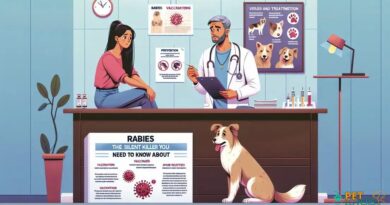What is Wrap
What is Wrap?
The term “Wrap” in the context of dog care refers to a specific type of protective covering or garment designed for dogs. These wraps are often used for various purposes, including providing warmth, support, and protection from injuries. They can be particularly beneficial for dogs recovering from surgery or those with joint issues, as they help stabilize the affected area and promote healing.
Types of Dog Wraps
There are several types of wraps available for dogs, each serving a unique purpose. For instance, there are surgical wraps that protect wounds and incisions, ensuring that the area remains clean and free from infection. Additionally, there are joint wraps designed to provide support to dogs suffering from arthritis or other joint-related issues. These wraps can help alleviate pain and improve mobility, making them an essential tool for many pet owners.
Benefits of Using Wraps
Using wraps for dogs offers numerous benefits. They can help reduce swelling and inflammation, provide warmth during colder months, and protect sensitive areas from further injury. Moreover, wraps can also offer comfort to anxious dogs, as the gentle pressure can have a calming effect. This is particularly useful during stressful situations, such as thunderstorms or fireworks, where a dog may feel overwhelmed.
How to Choose the Right Wrap
When selecting a wrap for your dog, it’s essential to consider several factors. First, assess the specific needs of your dog, such as the type of injury or condition they are experiencing. Additionally, ensure that the wrap is made from breathable materials to prevent overheating. The size and fit of the wrap are also crucial; it should be snug but not too tight, allowing for comfortable movement without restricting circulation.
Application and Usage
Applying a wrap correctly is vital for its effectiveness. Start by gently cleaning the area that requires support or protection. Then, carefully wrap the material around the affected area, ensuring that it is secure but not overly tight. It’s important to monitor your dog while they are wearing the wrap to ensure they are comfortable and that the wrap remains in place. Regular checks can help prevent any potential issues, such as irritation or restricted blood flow.
Maintenance of Dog Wraps
Proper maintenance of dog wraps is essential to ensure their longevity and effectiveness. Most wraps can be machine washed, but it’s crucial to follow the manufacturer’s care instructions. Regular cleaning not only keeps the wrap hygienic but also helps maintain its elasticity and overall condition. Inspect the wrap for any signs of wear and tear, and replace it if it becomes damaged to ensure your dog continues to receive the necessary support.
Wraps for Specific Conditions
Different wraps are designed for specific conditions, and understanding these can help you make an informed choice. For example, there are wraps specifically designed for post-surgical recovery, which often feature additional padding and support. Similarly, there are wraps tailored for dogs with hip dysplasia or other orthopedic issues, providing targeted support to alleviate discomfort and promote healing.
Alternatives to Wraps
While wraps are beneficial, there are also alternatives that may suit your dog’s needs. For instance, dog boots can protect paws from harsh weather conditions, while compression shirts can provide a calming effect similar to wraps. Additionally, there are various types of braces available for dogs with joint issues, offering another layer of support. It’s essential to consult with a veterinarian to determine the best option for your dog’s specific situation.
Consulting a Veterinarian
Before using a wrap or any other supportive device, it’s advisable to consult with a veterinarian. They can provide guidance on the most suitable type of wrap for your dog’s condition and demonstrate the correct application technique. A veterinarian can also help monitor your dog’s progress and make any necessary adjustments to their treatment plan, ensuring the best possible outcome for their health and well-being.



